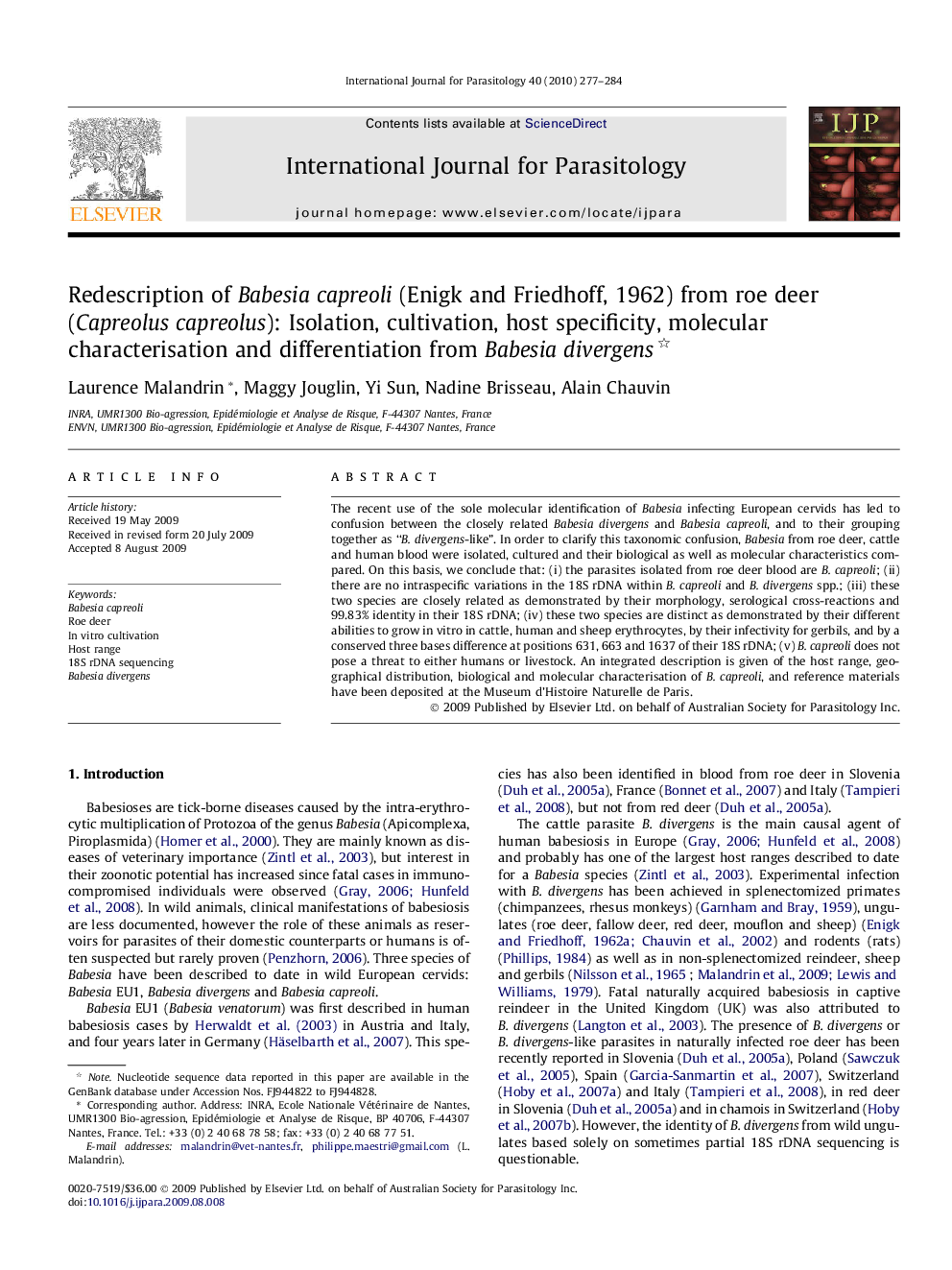| Article ID | Journal | Published Year | Pages | File Type |
|---|---|---|---|---|
| 2436592 | International Journal for Parasitology | 2010 | 8 Pages |
The recent use of the sole molecular identification of Babesia infecting European cervids has led to confusion between the closely related Babesia divergens and Babesia capreoli, and to their grouping together as “B. divergens-like”. In order to clarify this taxonomic confusion, Babesia from roe deer, cattle and human blood were isolated, cultured and their biological as well as molecular characteristics compared. On this basis, we conclude that: (i) the parasites isolated from roe deer blood are B. capreoli; (ii) there are no intraspecific variations in the 18S rDNA within B. capreoli and B. divergens spp.; (iii) these two species are closely related as demonstrated by their morphology, serological cross-reactions and 99.83% identity in their 18S rDNA; (iv) these two species are distinct as demonstrated by their different abilities to grow in vitro in cattle, human and sheep erythrocytes, by their infectivity for gerbils, and by a conserved three bases difference at positions 631, 663 and 1637 of their 18S rDNA; (v) B. capreoli does not pose a threat to either humans or livestock. An integrated description is given of the host range, geographical distribution, biological and molecular characterisation of B. capreoli, and reference materials have been deposited at the Museum d’Histoire Naturelle de Paris.
Graphical abstractFigure optionsDownload full-size imageDownload high-quality image (47 K)Download as PowerPoint slide
